What if we told you that the simple act of optimizing your fleet management could skyrocket your company’s efficiency by over 40%? That’s right—many businesses are leaving money on the table by not leveraging these advanced techniques.
In today’s fast-paced world, where costs are soaring and environmental concerns are pressing, optimizing transportation can no longer be ignored. Businesses must adapt to stay competitive, and effective fleet management is key.
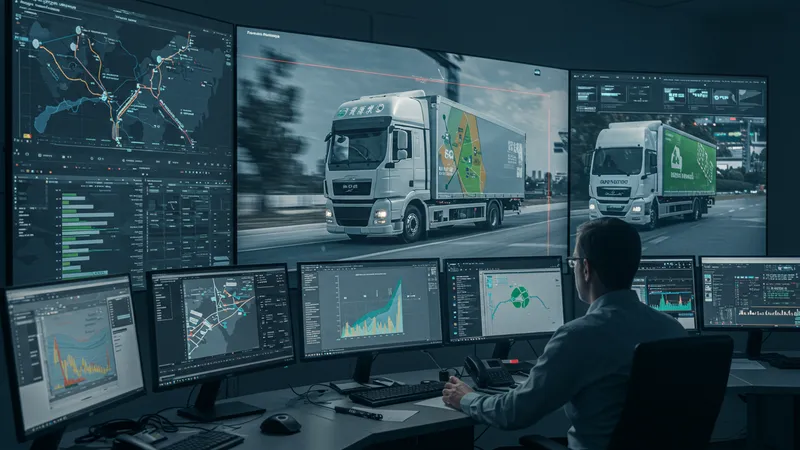
What’s truly surprising is that many companies are still blind to the hidden potentials of fleet management. For instance, by optimizing routes, companies have slashed fuel usage by up to 30%, saving hundreds of thousands annually. Imagine reallocating those savings to growth initiatives! But that’s not even the wildest part...
The right solutions are more than just about cutting costs; they offer real-time data analytics, allowing fleet managers to respond proactively to unforeseen issues. Businesses are more connected than ever, yet many are still using outdated practices. There are revolutionary changes happening right now that could redefine your fleet's operations. But we’re just scratching the surface here...
Keep reading as we delve into the world of fleet management, exposing secrets that could transform your business landscape. What happens next shocked even the experts...
Route optimization isn’t just about choosing the shortest path; it’s about considering traffic patterns, road conditions, and vehicle capabilities. Companies embracing this holistic view have reported delivery times improving by up to 25%. But there's a twist—technology isn’t the only solution. Understanding driver preferences can sometimes lead to even better outcomes.
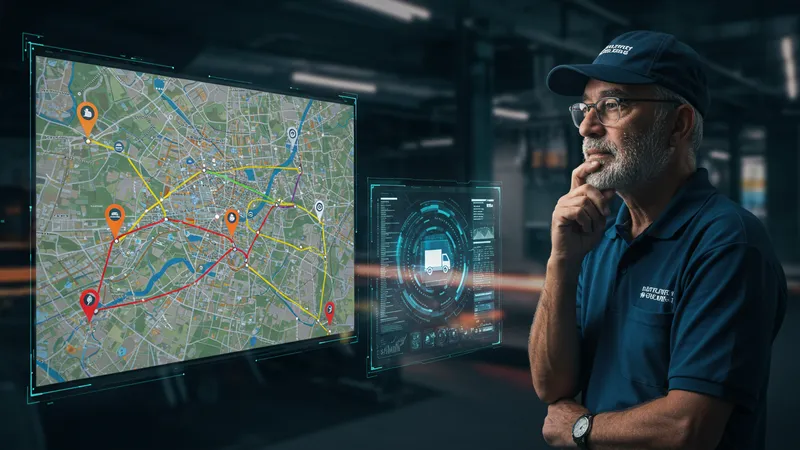
By incorporating advanced AI-driven planning, one firm cut their planning time from hours to mere minutes. Yet, personal insights from drivers who've clocked millions of miles are valuable. Their real-world experience contributes nuances that algorithms sometimes miss. But there’s one more twist to this...
Mapping software, when combined with weather data, can forecast the best routes days in advance. This predictive capability ensures fewer delays due to unforeseen weather events, which can stall operations. However, many still rely solely on GPS data, overlooking these strategic enhancements. But the unexpected doesn’t end here...
What’s next might change how you see your fleet forever: some companies are experimenting with drone-assisted data gathering to rethink routes daily. It’s like having a bird’s-eye view over traffic and terrain without ever leaving ground level. This could revolutionize how logistics are perceived. But there's more around the corner…
Imagine knowing about a vehicle breakdown before it even occurs. Predictive maintenance uses data from sensors to anticipate part failures, reducing downtime significantly. One logistics giant implemented this and saved over $100,000 in maintenance costs in just one quarter. But this is just scratching the surface.
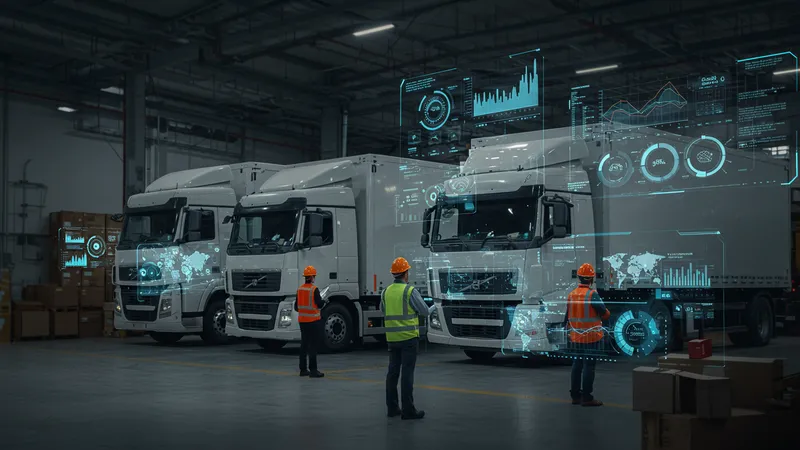
Beyond mere cost savings, predictive maintenance intersects with improved safety records. By addressing issues before they surface, companies report fewer accidents and higher driver satisfaction levels. But there’s more: implementing these practices can smooth out peaks in service demand, making maintenance scheduling much more efficient.
Unfortunately, many fleets are not yet equipped to harness this level of proactive management. They still reactively respond to equipment issues, which can disrupt schedules and inflate repair costs. However, with the right investment, this barrier can be overcome, and the payoff is substantial.
The next revelation might shock you: some fleets are reducing their vehicle numbers without sacrificing service levels, thanks to the efficiency gains from predictive maintenance. Shrinking a fleet may seem counterintuitive, but the results speak for themselves. But this transformative journey continues...
The unpredictable costs of fleet management often seem like they’re influenced solely by external fuel rates. However, when investigating deeper, it becomes evident that internal inefficiencies contribute just as much to these fluctuations. Did you know that idle time can waste as much fuel as a 10% increase in prices?
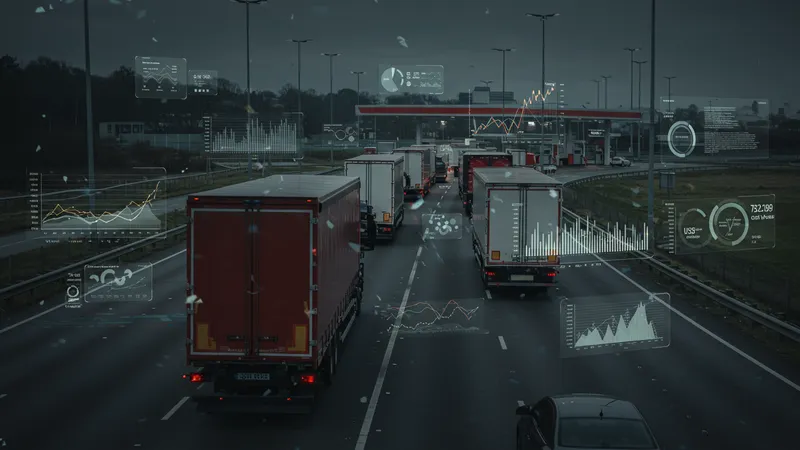
Many companies are blindsided by the sheer impact of minor inefficiencies. For instance, small delays in supply chain communication often lead to resource wastage that accumulates over time. Improving transparency and real-time data access can drastically curb these hidden expenses. But you won’t believe what else we found...
Keeping a close eye on each vehicle's unique performance characteristics can prevent unnecessary expenses. Differences in vehicle ages and uses demand tailored strategies for each. Ignoring this often leads to underperforming fleet segments running up costs unchecked. But there’s even more to unravel...
Are you aware that optimizing driver assignments to vehicle types can further enhance fuel efficiency? Counterintuitively, matching heavier vehicles with specific routes and load types saves more fuel than arbitrarily distributing tasks. This hidden knowledge could revolutionize your cost-saving strategies. But let’s keep diving deeper...
Driver behavior plays a surprisingly pivotal role in fleet efficiency. Aggressive driving not only increases accidents but also greatly impacts fuel consumption. Studies have shown that safer driving habits can cut fuel usage by up to 10%. What's more shocking? Many companies remain unaware of this easily rectifiable drain on resources.
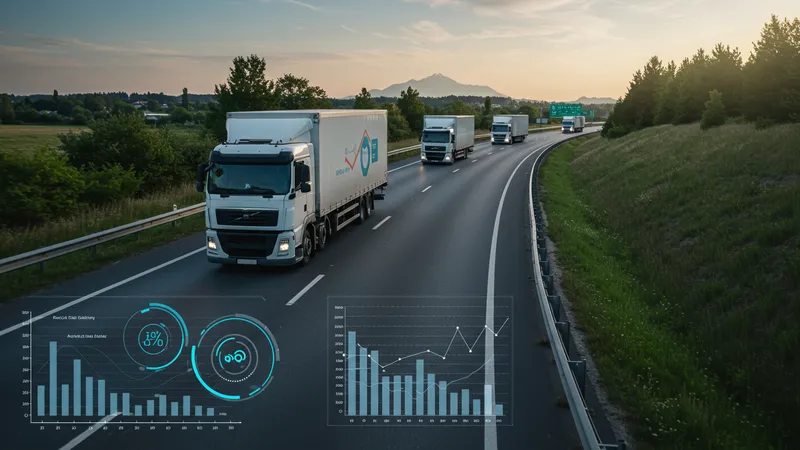
Some fleets have begun using gamified systems to encourage positive driver habits, rewarding those who maintain speed limits and reduce hard braking. It turns efficiency into a competitive advantage. But beyond these incentives lies an even bigger revelation...
Advanced telematics systems monitor driving styles, providing real-time feedback to drivers. This instantaneous information can lead to immediate corrections on the road, drastically enhancing safety and efficiency. Yet, most fleets fail to fully leverage these insights. What unfolds is even more transformative...
Think improving driver behavior is just a hassle? Some businesses report reducing insurance premiums by up to 15% due to decreased accident risks. Driver conduct directly correlates to savings in ways previously unimagined. But this is just the beginning of a wider industry shift...
Beyond traditional GPS tracking, current technologies offer real-time vehicle diagnostics and driver performance monitoring. These innovations can provide detailed insights into every aspect of fleet operation, but can also be overwhelming if not managed correctly. Yet, one thing's for sure—they're game-changers.

Some companies utilize drones for an aerial view of traffic conditions, offering unprecedented flexibility and foresight in route selection. This ensures fleet movements are always strategic, optimizing delivery times and reducing delays. But these aren’t just futuristic toys—they're today’s strategic goldmine.
The use of augmented reality is also transforming the scene, providing mechanics with heads-up displays to more effectively manage repairs and maintenance. It integrates seamlessly with existing systems to keep fleets road-ready, but utilizes resources that many firms have yet to discover. But that's just scratching the surface.
Let’s not overlook the simplicity of smartphone integration in modern fleets—direct contact for drivers with detailed updates on road conditions and suggested routes. It’s a straightforward yet underutilized tool that has rivaled more complex systems in effectiveness. But as the story unfolds, surprises continue...
Many companies operate under the assumption that a larger fleet equals greater efficiency. However, this isn’t always the case. By focusing on fleet optimization rather than expansion, some businesses have actually streamlined their operations, reducing costs while maintaining service levels. But there are twists that defy conventional wisdom.

Optimizing fleet utilization involves analyzing vehicle use patterns to determine if they’re fulfilling actual needs or just creating excess capacity. This has challenged firms to rethink their deployment strategies, saving substantial costs. Yet, it’s more than just numbers—it’s a shift in operational ethos.
What’s even more counterintuitive? Downsizing fleets not only cuts costs but also can boost employee morale. Drivers and managers are less stressed managing a lean, precisely utilized fleet. The sweet spot is discovered by adopting a metrics-driven approach that many still overlook.
Companies are fostering a culture of conscious fleet use where every mile counts. This mindful approach uses data analytics to optimize every aspect of fleet operations, allowing the business to squeeze each valuable efficiency drop from its resources. But there's more intuitive innovation to consider...
Fuel management systems are more than just tank monitors—they’re comprehensive tools that oversee consumption patterns, identify inefficiencies, and predict future costs. These systems have helped firms reduce consumption by targeting wasteful practices, some saving up to 15% annually. However, there’s more complexity beneath the surface.
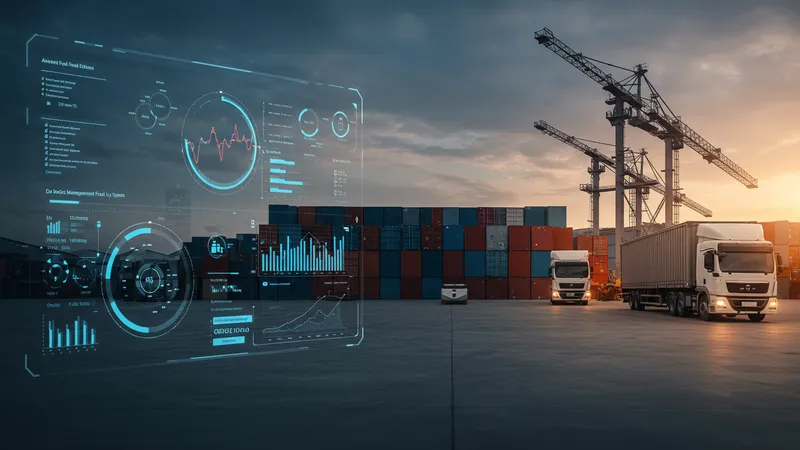
Advanced systems can alert managers instantly of fuel theft, a common issue that can significantly impact the bottom line. Some companies were astounded to find tens of thousands lost yearly due to unchecked discrepancies. But addressing this goes beyond simple vigilance.
The integration with trip planning software is a game-changer, allowing real-time adjustments to mitigate unnecessary fuel use. This flexibility can save thousands annually, yet many fleets haven’t fully bridged this integration gap. But these insights continue to reveal deeper truths...
Then there’s the prediction angle—using machine learning, systems can forecast fuel needs and price fluxes weeks ahead. This strategic foresight enables companies to budget more efficiently, a boon for those mastering the art of meticulous resource planning. However, the journey forward is still unfolding...
Automation is transforming fleet management, minimizing human error and boosting precision. Processes that once consumed hours now take minutes, freeing managers to focus on strategic priorities. Still, some fear losing the human touch in this evolution.

Automation platforms handle everything from scheduling to reporting, enabling seamless data flows that improve decision-making. Companies using these systems report fewer mishaps and smoother workflows. But what’s next could redefine expectations.
Some managers worry that automation might over-standardize operations, stifling creativity. Yet, industries that balance automated systems with human oversight discover an optimal blend of efficiency and innovation—a concept still novel to many.
The potential of fully autonomous fleets, leveraging self-driving technology, promises further disruption. But realizing this potential will require not just technology adoption but a shift in risk management and business models. This notion is just the start of a broader discussion on tomorrow’s operational transformations...
Fleet management isn’t merely about cutting costs—there’s a significant environmental aspect too. Companies adopting sustainable practices find not only reductions in carbon footprints but improved corporate reputations. Yet, the path to sustainability can seem daunting.

From hybrids to all-electric vehicles, fleets are exploring various options to meet eco-goals. Each offers unique benefits, but the transition requires strategic planning to ensure logistical harmony. And this is where many struggles persist.
Green logistics isn’t just a trend; it’s a pressing demand. Optimizing routes to minimize fuel usage, supporting carbon offset initiatives, and improving vehicle efficiency are critical steps. Yet, balancing environmental concerns with profitability remains a complex equation.
The next logical step? Adopting regenerative practices, such as using biofuels and maintaining eco-friendly warehouses, stands as a benchmark for forward-thinking businesses. But these adjustments demand deep strategic planning that might redefine industry standards. Yet, this is just the precursor to a radical industry reset...
Data analytics aren’t just valuable—they’re crucial for gaining a competitive edge. Insights drawn from comprehensive data sets can refine operations in ways once thought impossible. Yet, without proper interpretation, data remains just numbers.

Firms utilizing predictive analytics report enhanced efficiency, identifying patterns and trends that optimize everything from maintenance schedules to route planning. But massive data pools require sophisticated systems to extract meaningful insights.
The analytics challenge lies in not just collecting but understanding these metrics to influence decisions positively. Some companies are leading by transforming raw data into actionable strategy, driving growth and profitability conclusively. However, many are still navigating basic analytic capabilities.
Are your competitors leveraging data to undercut your operations? Leaders proactively shape data-driven cultures, positioning themselves as future-ready businesses. Here lies a critical juncture in defining value propositions within fiercely competitive landscapes. But one industry secret remains under wraps...
Outsourcing fleet management is a viable solution for many, but it brings a unique set of risks and rewards. While it may free resources and reduce stress, it also relinquishes direct control. Weighing these factors is more nuanced than it appears at first glance.

Some companies save considerable costs by outsourcing, gaining access to expertise and technology they couldn’t justify internally. However, compromising on service quality and aligning external priorities with internal goals are potential pitfalls.
The outsourced relationship demands transparency and mutual trust. Properly managed, it acts as a growth catalyst, ensuring operations are tight and costs controlled. But there’s an intricate balance to strike, which not all succeed in achieving.
Despite concerns, outsourcing remains appealing, offering access to cutting-edge methodologies. The key to success? A thorough vetting process, ensuring provider values align with that of the business. A roadmap to success lies within those who navigate diligently. And the next revelation might surprise you...
Fleet financing options can be complex, but they’re essential to understand for scaling operations effectively. Choosing between leasing and buying impacts a company’s capital structure significantly, requiring strategic foresight. But how do you decide?
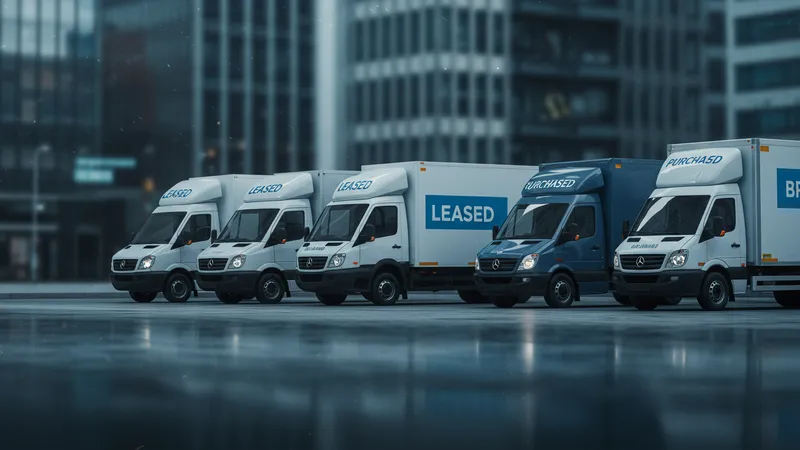
Leasing offers flexibility with less up-front commitment, appealing to rapidly scaling businesses. It allows staying updated with the latest vehicle technology without heavy investment. However, long-term costs can outweigh immediate benefits without careful assessment.
Purchasing, on the other hand, provides complete ownership, allowing for depreciation benefits. It’s a long-term play, demanding substantial initial expenditure but offering eventual financial returns. Striking balance depends on financial strategy and growth outlook.
Some companies integrate both models, mixing leasing and purchasing based on vehicle purpose and lifecycle. This flexible approach tailors financial strategy with operational needs, becoming a best practice model in the industry. Yet there’s more to deliberate in financing intricacies...
Integrating IoT technology into fleet management transforms operations from reactive to proactive. Real-time data, gathered from sensors, empowers managers to act quickly and decisively. This represents more than technological prowess—it’s about operational transformation.
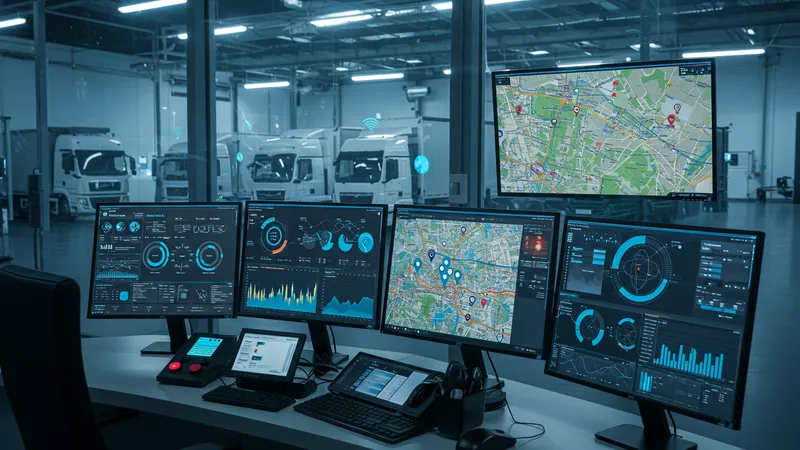
From monitoring tire pressure to detecting real-time vehicle conditions, IoT ensures vehicles operate at optimal efficiency levels. It’s a data-driven approach that preemptively resolves issues, demanding infrastructure capable of handling vast data streams.
Yet, implementation isn’t without its challenges. The integration requires secure networks and comprehensive training to make informed decisions. For some, data becomes a beacon of efficiency, while others are overwhelmed by the sheer volume.
Attaining full IoT integration reflects a commitment to next-level business operations. The ultimate goal for many is achieving a mostly-autonomous fleet, made possible through the ambition of interconnected technology. But first, the industry must navigate unforeseen hurdles before this becomes a reality...
With the rise of digital fleet management technologies comes increased vulnerability to cyber threats. Fleet data protection is now paramount, guarding sensitive information from potential breaches. But how can firms stay ahead of cybercriminals?

Secure data storage and the encryption of communication channels are foundational. Progressive businesses are investing in advanced cybersecurity measures, balancing accessibility with robust security, but the field evolves rapidly.
Training employees is another critical aspect. A well-informed team can identify threats early, acting as the first line of defense against evolving cyber tactics. Yet, many firms overlook this integral step, inviting potential compromises.
As fleets become increasingly digital, leaders cannot afford complacency. A proactive defense strategy preserves operational integrity and maintains trust across all business facets. But the challenge intensifies, with new risks emerging continually, demanding vigilance...
The future of fleet management hints at unprecedented efficiencies through technological integration and changes in operational priorities. Yet, the pace of change leaves little time for hesitation. Insightful planning is crucial for adapting to these transformations.

AI, machine learning, and IoT are expected to become more deeply entrenched, offering real-time analytics and insights. Those who grasp these advancements will shape the sector’s landscape, but it demands a readiness to adapt and invest.
Competing pressures of sustainable practices are also central, influencing fleet composition and management strategies. Balancing cutting-edge technology with environmental responsibility highlights the forward-thinking organization’s ethos.
The next few years promise accelerated evolution, with automation driving new operational models. Staying informed and agile positions businesses for success amidst inevitable industry changes. Yet, the uncharted territory of future disruptions is where opportunities truly lie...
The tireless evolution of fleet management promises a thrilling journey, packed with innovation and transformation. The profound impact on the logistics world redefines agility and efficiency, shattering old norms and setting new benchmarks. Understanding these techniques isn’t just about keeping up—it’s about propelling into a future full of opportunity.
Share this article with peers to spark conversation or bookmark it to revisit insights that could transform your fleet's destiny. Now is the time to act and lead the way in optimizing transportation for a more efficient tomorrow.